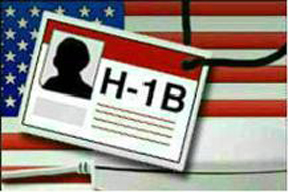The bill will also bring some respite to H-1B workers whose jobs get suddenly terminated. At present, there is no respite and an H-1B worker is in violation of his or her status upon termination. The bill will grant a 60 day grace period if the H-1B is terminated before the I-94 expires during which time a new employer can file a petition to extend or change status.
This is the first step. We also urge that Congress passed a startup visa for entrepreneurs who wish to set up innovative businesses in the US. The H-1B visa is ill-suited for startups due to the need for the employer to establish control over the H-1B worker’s employment, which is difficult to demonstrate if the foreign national is the founder and owner of the entity.
The bill will also prohibit USCIS and DOS from denying subsequent petitions, visa or applications involving the same petitioner and beneficiary unless there was a material error relating to the approval of the prior petition, a material change in circumstances has occurred or new material has been discovered which adversely affects the eligibility of the employer or the worker. Although this bill has bipartisan support, it remains to be seen whether it will pass Congress.
Republicans will want to introduce an amendment to abolish the Deferred Action for Parents Accountability (DAPA) program and Democrats may want to include provisions to make it more comprehensive such as legalizing undocumented persons. If both parties want to be able to demonstrate and can get something done, it would behoove them to pass this bill so as to avoid another H-1B cap quagmire looming ahead of us. Additionally, this bill will also help to further strengthen the American economy.
Section 102 of the I-Squared Bill would allow both H-4 and L-2 spouses to work, providing them with an “employment authorized endorsement of other appropriate work permit.” Does this mean a need to get an Employment Authorization Document? Who knows?
We welcome this development even though there is nothing in the INA right now that prevents an H-4 spouse from working. This prohibition is purely an act of regulation.
While the USCIS has proposed to allow H-4 employment in select instances, the I-Squared version of H-4 employment authorization is a distinct improvement. I-Squared improves the USCIS proposed rule as it would allow H-4s to obtain EADs without preconditions.
The proposed USCIS rule imposes preconditions where the principal must either have to have an approved I-140 or be filing for an H-1B extension beyond the 6th year under the American Competitiveness in the 21st Century Act. Both versions unnecessarily limit H-4 employment to spouses rather than extending it to teen age children.
Much as with the notion of a flexible H-1B cap, this reframing of visa availability is not so much an attempt to create a new immigration law as to bring new depth and definition to the existing INA, thus indicating yet again that the value of incremental change is to function as an improvement upon existing legislation.
While I-Squared does not overly challenge the tyranny of priority dates, it does so indirectly by updating our understanding of visa availability and exempting EB-1 extraordinary ability and outstanding researchers from being subject to the crushing weight of the numerical employment based caps, as well as advanced degree holders with STEM degrees.
The concept of family unit is advanced by not counting family members against the employment-based immigrant visa caps but it would be even better if family members were similarly exempt as a factor in the family-based quota limits.
While I-Squared does not explicitly link H-1B allotments to domestic economic conditions, it does so on a de facto basis by allowing the H-1B cap to rise or fall in connection with increases or decreases in H-1B sponsorship which themselves are a direct function of business profitability. While I-Squared does not make the H-1B truly portable, it does grant a temporary 60 day basis for the H-1B worker to find a new job without falling out of status.
While I-Squared does not explicitly sanction consular reviewability, it makes it unnecessary for E, H, L, O or P visa holders to go to a consulate in the first place in order to renew their existing visas by restoring the pre-9/11 practice of visa revalidation.
While I-Squared retains the INA 214(b) presumption of intending residence or immigrant intent, it exempts F-1 students from the obligation to maintain an unabandoned foreign residence abroad. Dual intent is not eliminated but students now come within the protection of its sheltering arms.
The concept of the per country cap is partially retained but only on the family based side of the ledger. Let’s take the next step and extend this reductive methodology to FB quotas. The priority date system remains in place but the INA now will define visa availability so long as any visa number allocated to employment-based preference immigrants has not yet been issued for that fiscal year.
Beyond that, US advanced degree STEM holders are no longer counted against the overall EB limits. In sum, I-Squared is a classic example of legislative remediation that retains the frame of what was not working while infusing it with new meaning and greater adaptability to meet and answer the challenges of the 21st century.
This is pre-eminently a time for innovation. Try something, if that does not work, well then, try something else. True and lasting change is what America needs. In a global economy, all forms of capital, including intellectual capital, flow to their optimum destinations according to the laws of supply and demand. The American economy does not operate in a vacuum and assumptions to the contrary, the very assumptions that have dominated the nativist response to date, only enrich our foreign competitors while we all lose.
The USCIS and DOL care about American workers but do not effectively express such concern through policies that make US companies less competitive and the US itself less desirable as a place for the world’s creative elite to live and work.
There is a better way where everyone benefits. We can, if we think and act anew, transform immigration policy from an endless source of controversy to a flexible weapon in our economic arsenal so that everyone profits.
For those who think a new way is too complex, do we not have complexity now and towards what end? For those who shrink from the demands of change, or doubt what they can do to chart a new course, let them listen to the wise words of Robert Frost in his immortal poem The Road Not Taken that can, if we have the will and wisdom to hear it, still speak to us today: ” Two roads diverged in a wood, and I – I took the one less traveled by, And that has made all the difference.”
Concluded
Gary Endelman & Cyrus D. Mehta







